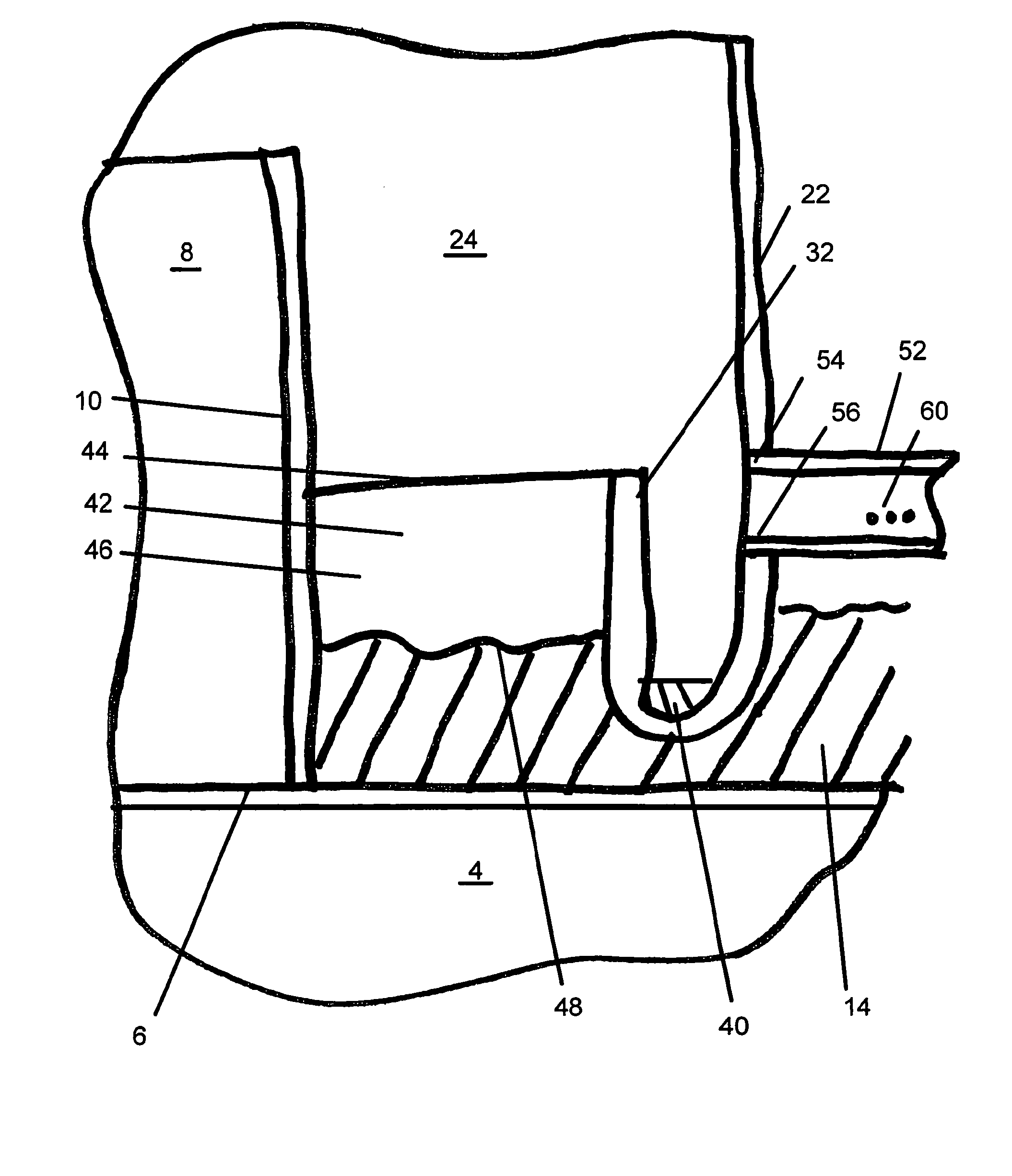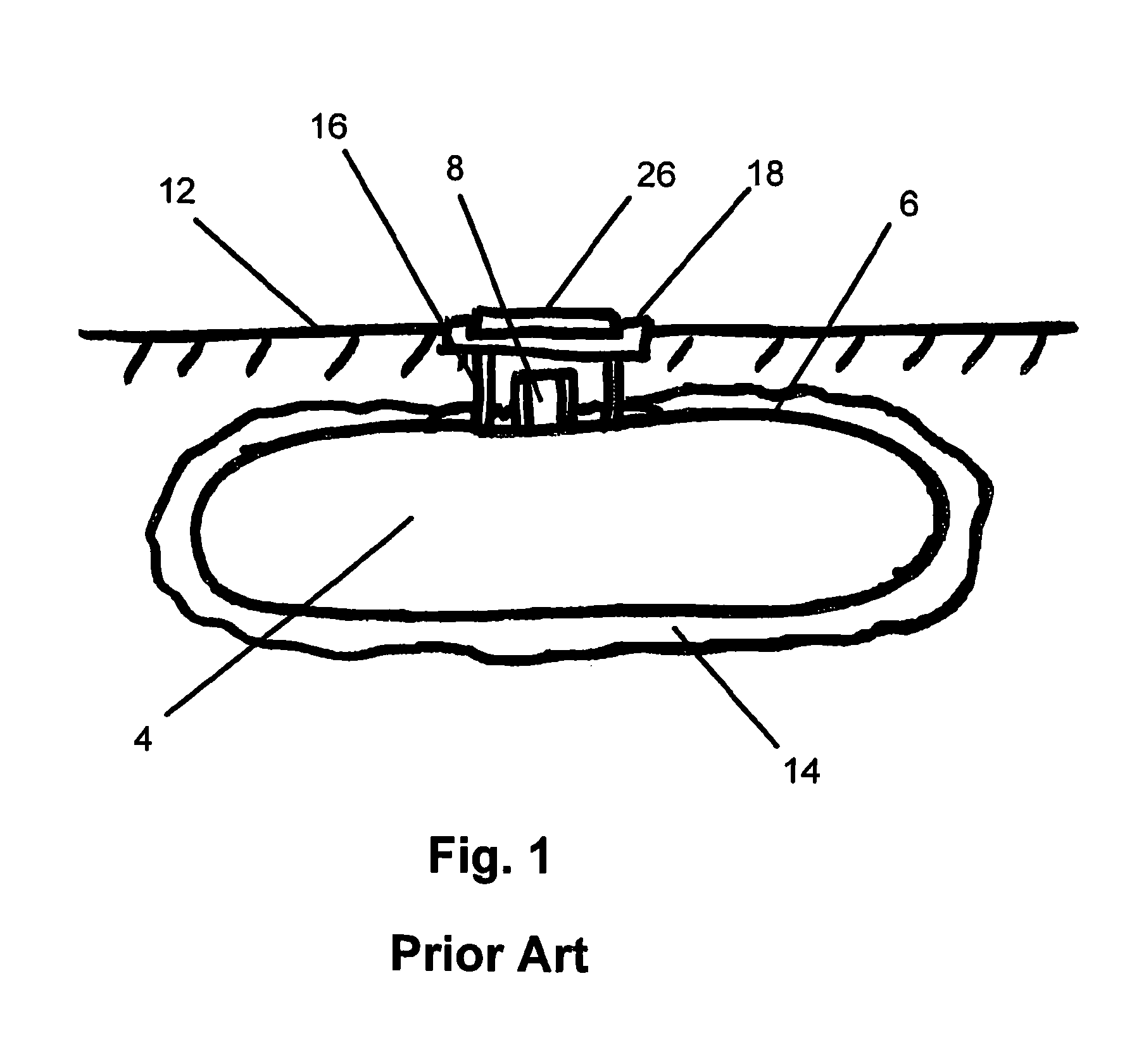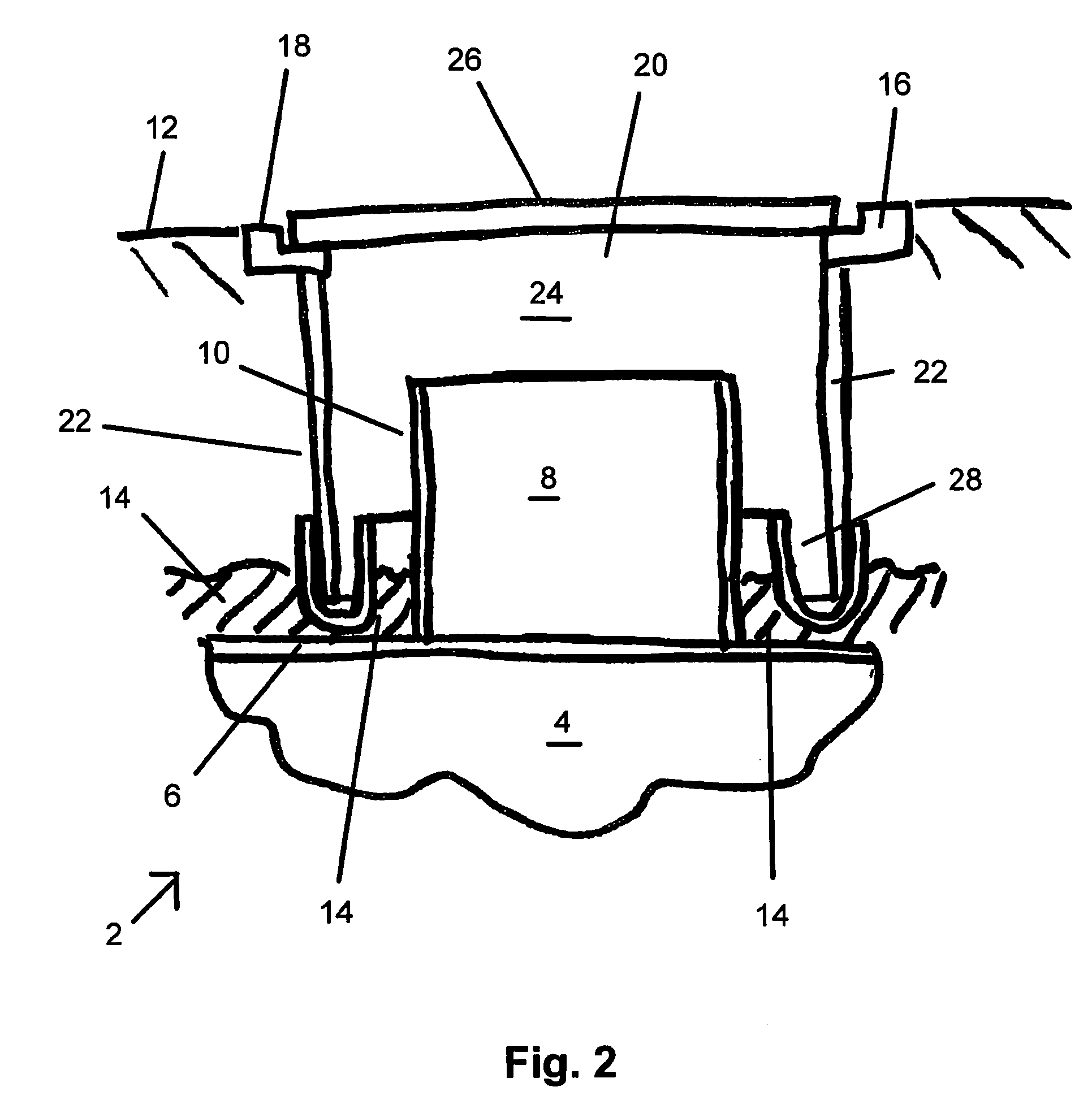Underground storage tank with sediment trap
a technology of sediment traps and storage tanks, applied in liquid handling, packaging goods types, transportation and packaging, etc., can solve the problems of owners of usts incurring remediation costs, damage to tank systems such as valves, valves, sensors, etc., and achieve the effect of preventing contamination
- Summary
- Abstract
- Description
- Claims
- Application Information
AI Technical Summary
Benefits of technology
Problems solved by technology
Method used
Image
Examples
Embodiment Construction
[0033]The Invention is an apparatus and method for preventing failure of an underground storage tank drainage system due to blinding of the drainage system by sediment. The Invention is also an apparatus and method for providing secondary containment for liquid released within a tank sump.
[0034]FIG. 1 illustrates a prior art underground storage tank system 2. An underground storage tank 4 is buried beneath the surface 12 of the ground. The underground storage tank 4 is surrounded in whole or in part by a drainage medium 14, as defined above. The drainage medium 14 serves to drain water away from the tank 4. A tank sump 8 is defined by sump perimeter wall 10, which is attached to a top side 6 of tank 4. Sump perimeter wall 10 forms a water and liquid-tight seal with top 6 of tank 4. Tank sump 8 contains tank 4 systems for access to the interior of the tank 4, such as a pump, vents, fill tubes, or other tank 4 systems or penetrations. Access to tank sump 8 is through a manway 24 from ...
PUM
| Property | Measurement | Unit |
|---|---|---|
| perimeter | aaaaa | aaaaa |
| volume | aaaaa | aaaaa |
| interior volume | aaaaa | aaaaa |
Abstract
Description
Claims
Application Information
 Login to View More
Login to View More - R&D
- Intellectual Property
- Life Sciences
- Materials
- Tech Scout
- Unparalleled Data Quality
- Higher Quality Content
- 60% Fewer Hallucinations
Browse by: Latest US Patents, China's latest patents, Technical Efficacy Thesaurus, Application Domain, Technology Topic, Popular Technical Reports.
© 2025 PatSnap. All rights reserved.Legal|Privacy policy|Modern Slavery Act Transparency Statement|Sitemap|About US| Contact US: help@patsnap.com



